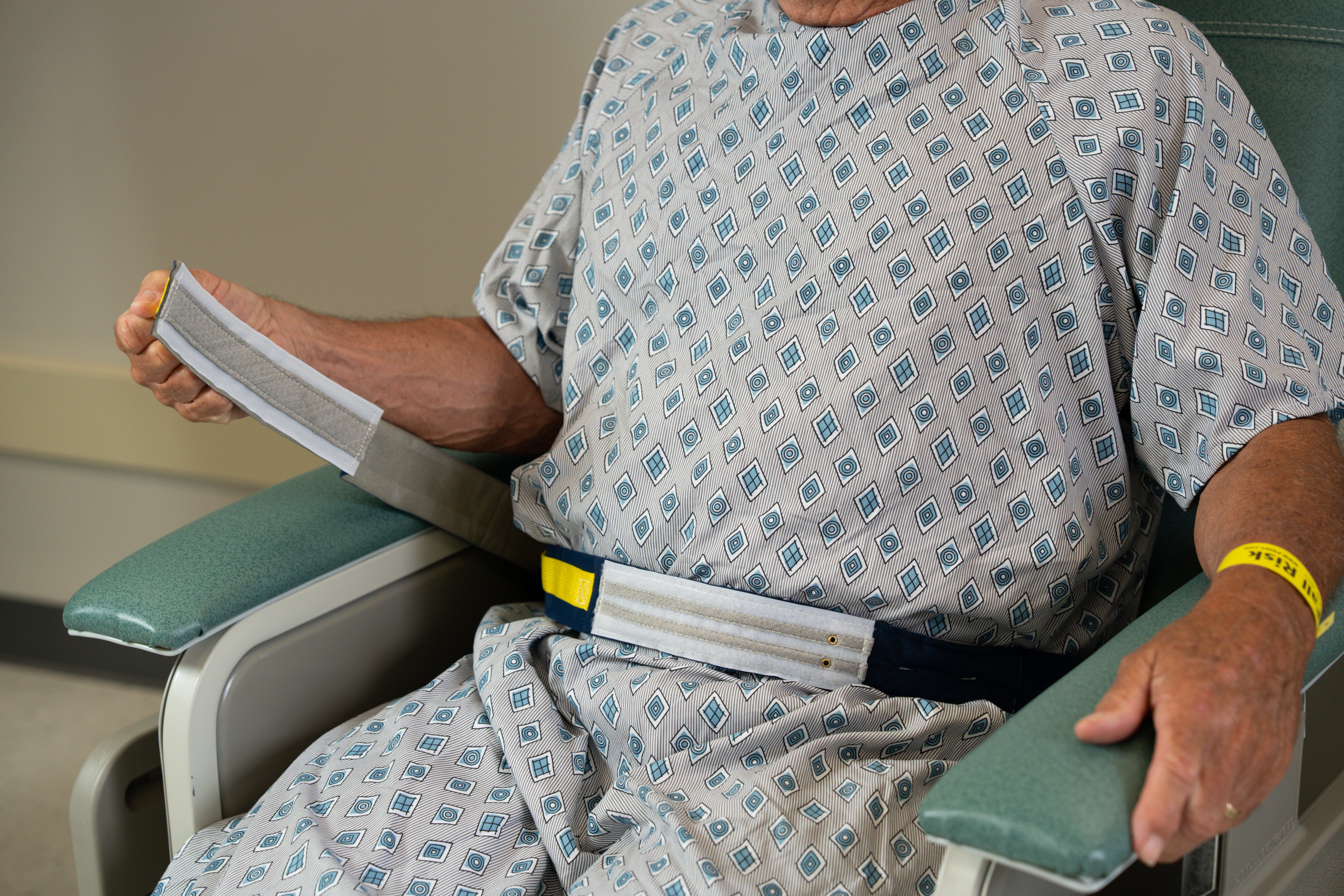TIDI Customer Service: +1 800.521.1314
Email: excellence@tidiproducts.com
OUR LOCATION
570 Enterprise Drive
Neenah, WI 54956 USA
Phone: +1 920.751.4300
Toll-Free Fax: +1 800.837.7770
Fax: +1 920.751.4370
TIDI Customer Service: +1 800.521.1314
Email: excellence@tidiproducts.com
OUR LOCATION
570 Enterprise Drive
Neenah, WI 54956 USA
Phone: +1 920.751.4300
Toll-Free Fax: +1 800.837.7770
Fax: +1 920.751.4370
HeadStart Sensors provide notification prior to the patient exiting the bed or chair, affording caregivers more time to get to the patient.
The value of self-releasing alarm belts has in hospitals

Unit leaders at the Center for Rehabilitation at Wilmington Hospital reported that the use of “self-releasing alarm belts” for qualifying patients was their “most significant and most effective decision” when seeking to lower their center’s overall fall rate.
Alderson FE, Boivin J. Self-releasing alarm belts: It takes two. American Nurse Today. 2017;12(3):25-26.
In addition to revamping their multifactorial approach — everything from implementing the Morse Fall Risk Assessment Tool to creating new policies on post-fall responses — Wilmington Hospital noted that using self-releasing alarm belts allowed “staff additional time to prevent a fall.”
Alderson FE, Boivin J. Self-releasing alarm belts: It takes two. American Nurse Today. 2017;12(3):25-26.
Yale New Haven Hospital trialed a hook-and-loop alarm belt for use alongside their multilayered fall prevention initiatives. According to Yale New Haven Hospital leaders, “The value of the belt is that it doesn’t restrain patients.” They found that the product allowed patients to remove the belt themselves, serving as a reminder rather than a physical restraint.
Wicker D, Boivin J. Hook-and-loop alarm belt: A vital component in a fall-prevention toolkit. American Nurse Today. 2017;12(1):26-27.
“This is a different time in nursing where staffing is a huge crisis, not even a problem, a crisis. When we are working with bare-bones staff especially, this product gives us more of a head start to get into a patient’s room versus a pad alarm which tells us the patient is already up. The belt alarm lets us know the patient is getting up and it gives us time to get to them. That’s why we use them; these belt alarms help us keep our patients safe.”
At our organization, “the use of the Posey HeadStart Notification Sensor Chair Belts is left up to the clinical judgment of the nurse. For the staff, the chair belts provide a level of comfort in knowing that when the patient is trying to mobilize, the belt will alarm, and they will have time to respond to the patient.”

See what the latest white paper has to say on advancing hospital fall prevention strategies with sensor-driven insights
Hospitals that embrace an integrated, data-driven strategy—combining clinical best practices with wireless sensors, alarms, and environmental safeguards—are better equipped to protect patients, reduce fall-related costs, and lead in safety innovation.
Our product suite supports key clinical and environmental elements:
By blending technology, environment, and training, Posey helps hospitals create a proactive fall prevention system—one that empowers staff, protects patients, and aligns with your care standards.
Posey is here to strengthen your hospital’s protocols—not replace them.
We understand the importance of consistency in patient care. That’s why our solutions are designed to seamlessly support your existing fall prevention program, helping you enhance safety without disrupting your workflow.
From evidence-based tools to trusted clinical outcomes—Posey has your fall program covered.
Fall Risk Identification: Magnets, bracelets, blankets, and non-slip socks are visual cues that support the patient’s care plan by promoting awareness across the care team and reinforcing fall prevention protocols without disrupting workflow.
Patient Monitoring: Wireless fall alarms and sensors help prevent patient falls by alerting staff when at-risk patients try to move without assistance. They support care plans by enabling quick response times and adding an extra layer of safety
Mobility: Gait belts are a hands-on safety tool that help staff assist patients during transfers and walking. By supporting safe movement, gait belts align with the care plan and promote patient confidence while protecting both patients and staff.
Injury Reduction: Fall mats and hip protectors meet fall prevention protocols by reducing injury severity during falls, supporting individualized care plans, and complementing broader safety strategies in healthcare settings.